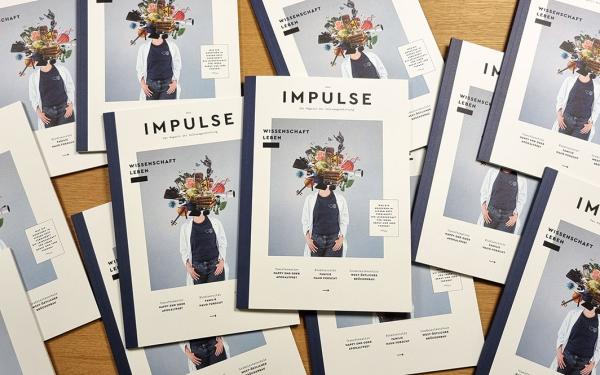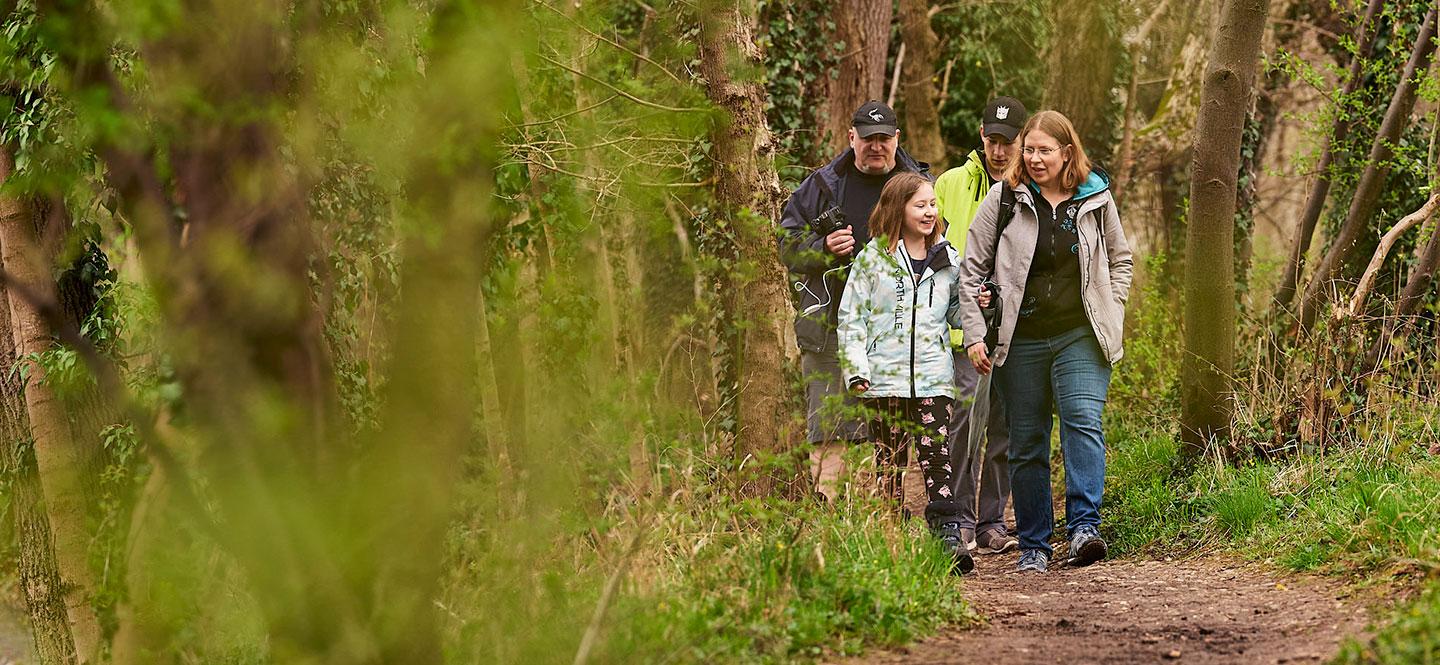
Felix Albertin für VolkswagenStiftung
Biodiversity - A family of researchers
In the very large thematic area of biodiversity, Joachim Haug works on very small objects: insect and crustacean larvae. His wife is also an enthusiastic zoologist. So, it's hardly surprising that the passion for research also took hold of their two children at an early age.
If you browse through the publications on Joachim Haug's website, you are sure to notice something rather unusual. In some of the articles, the name "Haug" appears several times: Joachim Haug, Carolin Haug and Gideon Haug. Though unlikely to find its parallel in the world of academia, this is not at all unusual in the case of Joachim Haug, who has virtually his entire family working in science. Caroline Haug, like her husband, is a zoologist, and together with their 16-year-old son Gideon, the two have already co-authored several scientific articles. Ten-year-old daughter Fenja is currently fascinated by crayfish and is often to be found drawing the claws of lobsters, crayfish, and their conspecifics. Basically, the kids couldn't help but be interested in the scientific study of animals, Joachim Haug says. "In a way, they grew up around people who do science. Gideon came into the world during our doctoral studies. Then, as postdocs, we spent a year at Yale University in the United States. So, he was always with us – even when we were giving talks at conferences."
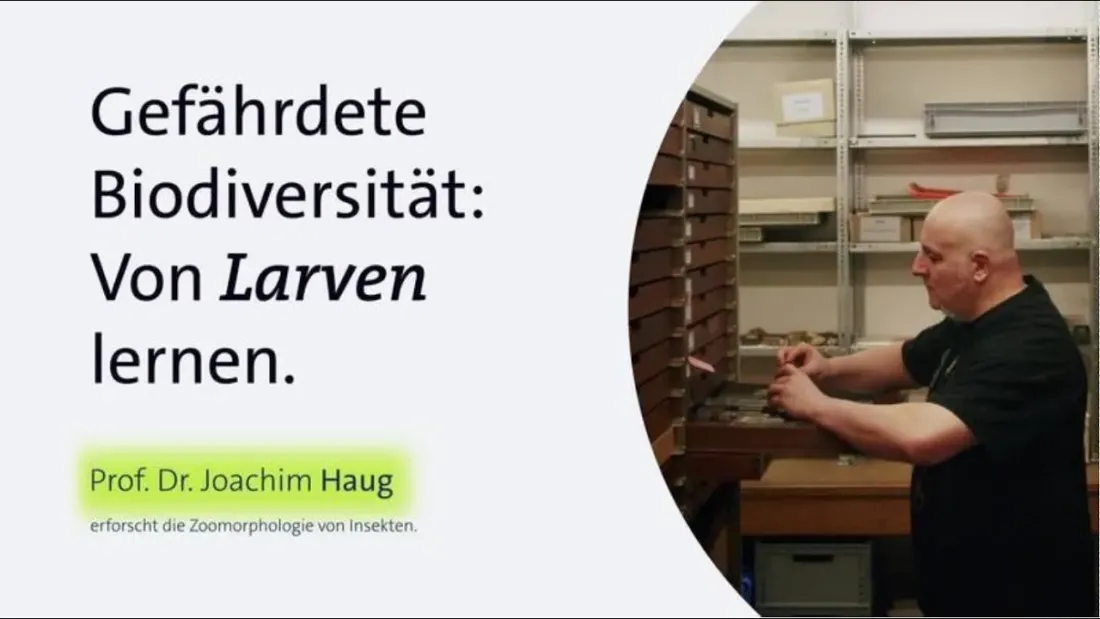
Element K für VolkswagenStiftung
Joachim Haug in a videointerview: Endangered biodiversity - learning from larvae
Learning early ...
Joachim Haug and his wife are concerned primarily with fossils. They document the diversity illustrated by these fossils and compare it with that of modern faunas to understand when and why there were major extinction events in Earth's history. Today, the Haugs are particularly interested in insects and crustaceans encased in amber. Over the years, they've spent a lot of time sorting through museum collections – also with their children around. "At one point, when he was four, Gideon learned to type. That's when he started typing the archive numbers of museum specimens into Excel spreadsheets," says Joachim Haug.
Later, Gideon became interested in elephants. Many parents would probably have given their children a plush toy elephant or a small one made of plastic. Gideon got a plastic prehistoric elephant – a model of an Amebelodon with a pointed snout that lived six million years ago. The couple showed Gideon how to reproduce skulls on the computer using programs like Photoshop and Illustrator. They showed him how to conduct his first literature search and he was allowed to compare the shape of prehistoric elephant skulls. Gideon then produced his very first poster to present the results at a symposium. He was barely six years old at the time. His sister followed his example. A few years later, she too presented her first poster – also at the age of six.
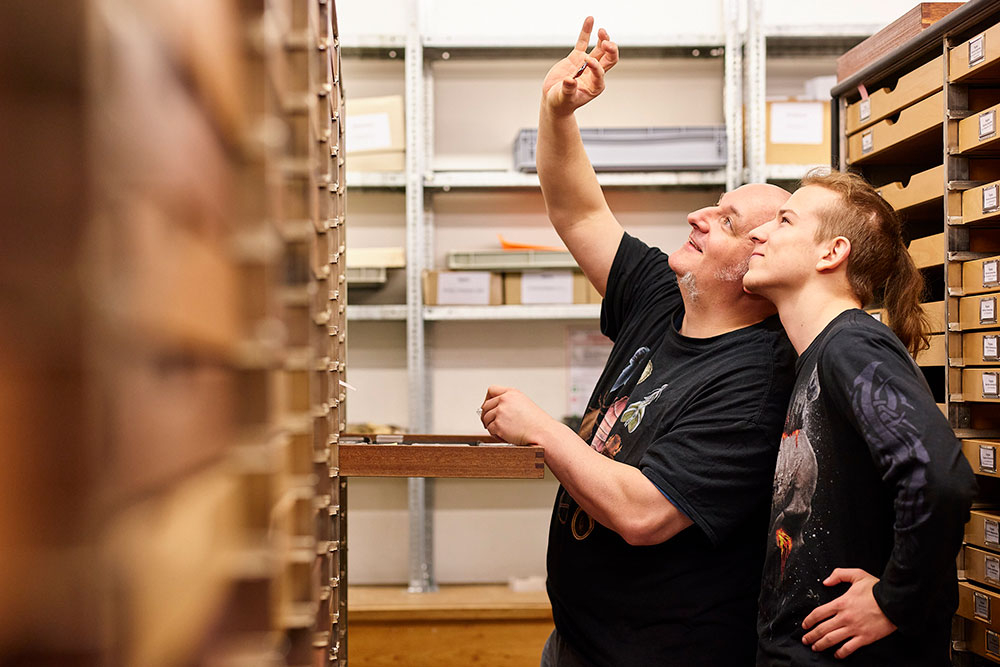
The holdings of the Bavarian State Collection of Palaeontology and Geology in Munich offer a wealth of research material.
The couple is fortunate to be able to work almost next door to each other at the Ludwig Maximilian University of Munich in the suburb of Planegg-Martinsried. Joachim Haug holds a Lichtenberg Professorship in Zoomorphology – funded by the Volkswagen Foundation. Carolin Haug is currently interim professor at the Chair of Systematic Zoology right next door. The labs are only a few kilometers from their apartment in the neighboring town of Neuried. It's just a few minutes’ bike ride through a small patch of forest to get from the university to home. Their work makes it relatively easy for them to work at home, because a good part of it is literature search.
Larvae – an essential form of existence
In recent years, Joachim Haug has specialized in a seldom researched field of zoology: the larvae of insects and crustaceans. "Most colleagues deal with the final stage of metamorphosis – the adult animals," he says. "Yet it's the larvae that are the most intriguing." For many insects, the larval stage lasts much longer than their adult existence. The adult mayfly, for example, lives only two days. The larva, on the other hand, lives for five years. So, larvae are the essential form of existence in many insects, as well as crustaceans. "It follows that larvae have a greater impact on the ecosystem," he explains. Over the long period as larvae, they eat significantly more than the adults. So, they consume more resources. On the other hand, this is fortuitous for other animals, as the larvae provide a source of protein-rich food throughout the year – even in times when no adults are around.
Larvae thus play a major ecological role. That is why Joachim Haug wants to find out whether the various insect species and groups have become scarcer over time. Important to him is the question of whether insect species are becoming extinct to a greater extent today than hundreds of thousands or even millions of years ago, also against the background of the current loss of insect populations. For this research, he needs prehistoric insects and larvae, which he finds primarily in amber. One challenge is to correctly identify the species. This is much more difficult than with adults. Everyone probably knows what a housefly looks like. To correctly identify a housefly larva is something else entirely. It is subtleties in the shape of the larvae that matter – the shape of the head or the tiny teeth lining the edge of the hard mouthparts, the mandibles, with which the larvae bite their food.
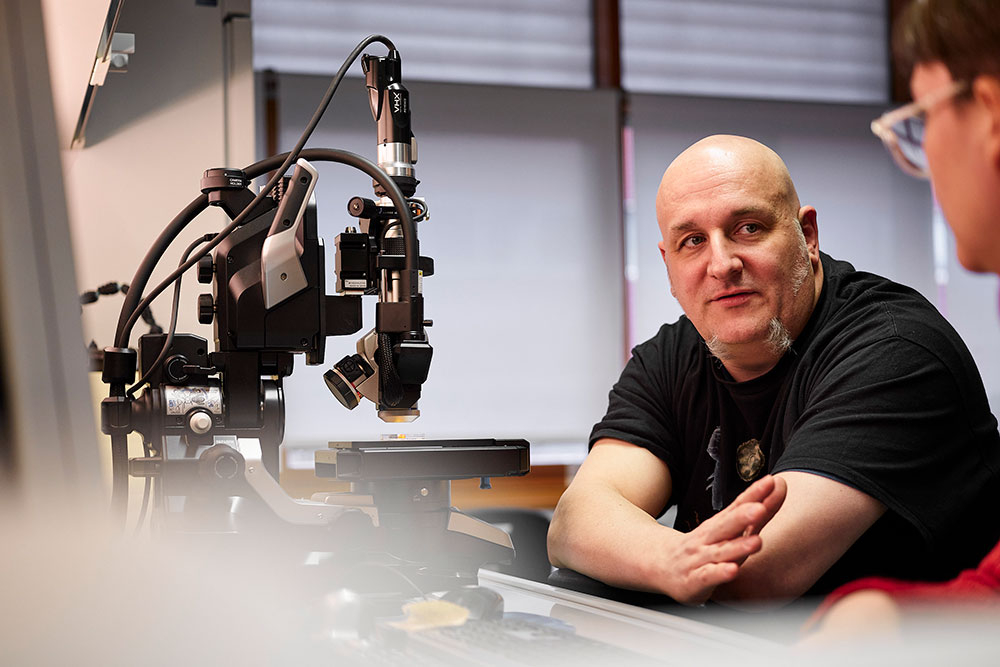
VHX microscopes can optimally display even the finest body parts of the larvae; Joachim Haug discusses morphological details with postdoc Sofia Arce from his research group.
Amber from private collections
"One often hears that there is a dearth of prehistoric larval specimens for many species groups," says Joachim Haug. "But you usually do find some without too much trouble." He searches articles for images of larvae that others have found in amber. And he scours zoological collections in museums for ambers that have insects and larvae encased in them. Most importantly, he keeps in touch with private amber enthusiasts. "It's amazing how many well-preserved larvae you can find in their collections," says Joachim Haug, and quite often they even bring the material to him in Munich.
"I then look at the most promising specimens in the lab under our microscopes, where you can transfer the image directly to a large computer screen." Together with his team, he has been working for some time on algorithms that automatically identify mandibles and other body parts in the computer image, in order to then compare them with those of other species. But the software is too often off the mark. "In that respect, there is still a lot of manual work," he says. "We often have to trace things by hand on the computer."
Gideon also helps him with this. Some time ago, the two began studying the larvae of lacewings and related species, elongated insects that are conspicuous in summer for their bright green bodies and delicate translucent wings. Lacewings have been around for more than 150 million years. During their research, Gideon compared prehistoric larvae from different regions of the world with larvae living today. Together with his mother and father, he has written several articles on the topic, which have appeared in the Palaeontological Journal and elsewhere. One result: Over the course of millions of years, the species diversity and form richness of the lacewing group has decreased. "I sometimes tease my working group with these articles by saying that it's not that hard to publish a paper. Even my son can do it," says Joachim Haug, laughing.
Successful together
"Not so long ago, people thought it was problematic for a couple to do research together owing to the difficulty of finding employment for both of them," Joachim Haug says, recalling the time when he was working on his doctorate. Moreover, working as a couple would not be well received. "But we experienced quite the opposite," he says. "At Yale, couples were actually encouraged with a view to increasing the number of women in research. And the decision to take our kids with us to conferences was a total success. Colleagues have seen our kids grow up over all these years." In fact, on the websites of zoological and paleontological societies, you can find photos showing the whole family at conferences or in front of shelves full of jars of animal specimens – the kids still as toddlers on dad's shoulders. They wear T-shirts with the heads of crabs and larvae printed on them. "We've hardly had any vacations all these years, though," he says. "Mostly, we managed to combine the conferences with short excursions; from Ljubljana, for example, we once traveled on to Venice."

One of the family's favourite excursion destinations, a wooded area near Planegg, is practically on the doorstep.
Today, the Haugs find themselves on the road less often. Their work now consists more of desk work – writing articles, expert opinions on articles written by others, or project and grant proposals. While each has their own specific focus, they frequently work on co-authored articles. "We publish about 25 papers a year," he says. "That's a high output. I'm pretty good at quickly writing down the first few pages of an article. I have a hard time finishing them, though. My wife is more structured in that respect." She also has a good eye for mistakes, he adds.
This sort of work is often done in the home office; but family life is not completely dominated by aspects surrounding their research. Between the children's rooms and the study there is an area entirely covered with judo mats: the “battleground.” It is used by all four for practicing martial arts. This has been a hobby of Joachim Haug for 30 years. To date, he has tried his hand at pretty much all martial arts and has a black belt in two disciplines. That is experience enough to train his kids. The two of them like to participate – just as much as they enjoy drawing crab claws and lacewing larvae.

